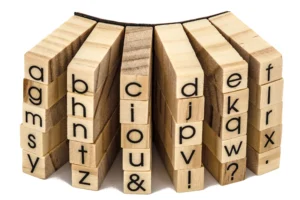
Fonts are the unsung heroes of design, communication, and branding. They shape how we perceive information, evoke emotions, and create lasting impressions. In a world dominated by visual content, the choice of font can make or break a design. But which fonts are the most widely used globally? This article delves into the most popular fonts, their history, applications, and why they remain timeless choices for designers, brands, and everyday users.
Fonts are more than just a stylistic choice; they are a critical component of effective communication. The right font can:
With so much at stake, it’s no wonder that certain fonts have risen to global prominence. Let’s explore the most used fonts and their significance.
Fonts have a rich history that dates back to the invention of the printing press in the 15th century. Over time, typography has evolved from handcrafted lettering to digital typefaces, each era contributing to the fonts we use today.
Understanding this evolution helps us appreciate why certain fonts have stood the test of time.
Here’s a list of the most widely used fonts globally, along with their unique characteristics and applications:
Helvetica is arguably the most iconic font of the 20th century. Designed in 1957 by Max Miedinger and Eduard Hoffmann, it is celebrated for its neutrality and versatility.
Times New Roman is a classic serif font that has been a staple in publishing since its creation in 1931.
Arial is a sans-serif font designed in 1982 as a competitor to Helvetica. It is known for its clean and straightforward design.
Roboto is a modern sans-serif font designed by Google in 2011. It is the default font for Android and many Google products.
Georgia is a serif font designed in 1993 by Matthew Carter. It is known for its readability on screens.
Verdana is a sans-serif font designed by Matthew Carter in 1996. It was created specifically for screen readability.
Futura is a geometric sans-serif font designed in 1927 by Paul Renner. It is known for its modern and futuristic design.
Open Sans is a humanist sans-serif font designed by Steve Matteson in 2011. It is known for its friendly and approachable design.

Several factors contribute to the widespread use of certain fonts:

As technology advances, the world of typography continues to evolve. Here are some trends shaping the future of fonts:
Fonts are a powerful tool in design and communication, shaping how we perceive and interact with information. The most used fonts globally, such as Helvetica, Times New Roman, and Roboto, have earned their place through a combination of readability, versatility, and timeless design. As technology continues to evolve, so too will the world of typography, offering new possibilities for creativity and innovation. Whether you’re a designer, a brand, or an everyday user, understanding the impact of fonts can help you make informed choices that enhance your message and leave a lasting impression.
Q: What is the most popular font for websites?
A: Roboto and Open Sans are among the most popular fonts for websites due to their readability and versatility.
Q: Why is Helvetica so widely used?
A: Helvetica’s neutrality and clean design make it suitable for a wide range of applications, from branding to signage.
Q: Are serif or sans-serif fonts better for print?
A: Serif fonts like Times New Roman are traditionally preferred for print due to their readability, while sans-serif fonts like Arial are often used for digital content.
Q: What are variable fonts?
A: Variable fonts allow for dynamic adjustments in weight, width, and other attributes, offering greater flexibility in design.
Q: How do I choose the right font for my project?
A: Consider factors like readability, versatility, and alignment with your brand identity when choosing a font.